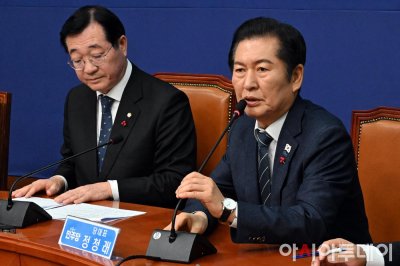WASHINGTON — Republican critics of affirmative action hailed Monday’s Supreme Court decision as a mandate for even more sweeping action by Congress and vowed to press home their attack on federal programs of racial preference.
Senate Majority Leader Bob Dole called the ruling–that preferential treatment based on race is almost always unconstitutional–”one more reason for the federal government to get out of the race-preference business” and summoned fellow lawmakers “to follow the court’s lead and put the federal government’s own house in order.”
Dole, once a supporter of affirmative action, has called for hearings on the subject in the Senate, and has said he may sponsor legislation to rewrite many of the programs. He was joined in his praise of the court ruling by fellow presidential contender Sen. Phil Gramm (R-Tex.), who said Monday’s decision “greatly strengthens the prospects” that he would seek to amend all funding bills passing through Congress this year to bar the use of federal dollars for “quotas and set-asides.”
The court’s dramatic ruling, meantime, thrust President Clinton and other Democrats into a new bind both legally and politically. Administration officials acknowledged it has disrupted a review of the federal government’s 180-odd affirmative action programs now under way. Clinton had sought the review to help deflect criticism both from the GOP and conservative forces within his own party.
Legally, Clinton now can hope to save parts of affirmative action only if he can come up with new rationales that are defensible under the narrow terms outlined by the Supreme Court on Monday. The court said affirmative action programs can be upheld as a means to correct specific, provable cases of discrimination, but not to correct suspected discrimination by a society over time.
That, in turn, underscores Clinton’s political challenge in dealing with the charged issues of race and gender. The President must either acquiesce in cutbacks to affirmative action programs, thereby risking alienation of minority voters who are crucial to his party’s base, or actively defend the programs and risk offending large numbers of white voters.
“This has really intensified the question of which programs should live and which should die,” said one Senate Democratic aide. “And that really raises the heat on what Clinton has been doing.”
The White House has said it expects to complete its review of affirmative action by the end of this month. Before the court announced the rulings, officials familiar with the review have predicted that it would essentially affirm most principles of federal affirmative action, while calling for changes in the procurement “set aside” programs that have attracted so much criticism.
Administration aides were in general agreement that the decision now would considerably delay the results of the review, which were to be released in a major thematic speech.
“If we’re not back to square one, we’ve at least moved back some distance,” said one Administration official.
But with the White House still contemplating its next move on the issue, House Republicans are set to redraft completely the controversial programs that were launched in the early 1960s to compensate women and minorities for past discrimination in higher education and the job market.
Rep. Charles T. Canady (R-Fla.), a one-time Democrat who now chairs the House Judiciary Committee’s constitution subcommittee, is set later this month to unveil legislation that would forbid the federal government to use gender or race preferences in any federal program, and dismantle many of the programs that have come to be central to affirmative action.
The House bill would effectively repeal one of the central features of 160 government programs that use racial and gender preferences in hiring and promoting federal workers, granting federal contracts and awarding benefits under federal programs. It would call a virtual halt to federal programs that “set aside” slots and pools of funding for businesses owned by minorities and women, and would require substantial changes in other programs.
On Monday, Canady said the court’s decision “gives impetus” to Republicans’ political efforts to roll back many such programs, by making clear the court’s intent to “return to a focus on individual rights” over groups’ rights.
But the complex ruling, he added, also makes it vital for Congress to weigh in quickly with its own views on affirmative action. “You’ll now see all kinds of challenges and litigation moving through district appeals courts, all the way to Supreme Court,” Canady said.
But Democratic proponents of affirmative action on Monday said that the court’s ruling had increased pressure on the White House to act, and to do so quickly, before Congressional Republicans seize the initiative.
“It is perhaps even more important that the President take time to delineate a vision and a course of action . . . as only the President can do,” said Rep. Kweisi Mfume, (D-Md.) former chairman of the Congressional Black Caucus.
Mfume, focusing on one of the majority opinion’s few comments that could be construed as justifying existing programs, lauded the court for acknowledging that “race discrimination is real and government has a role in eradicating it.”
“For those Republicans who have some notion that they ought to do away with all set-asides in the government because there’s no need for them, the court is saying, that is not correct, there is still,” he said.
Mfume’s positive tone was echoed by Rep. Maxine Waters (D-Los Angeles), who said she was “somewhat disappointed . . . but certainly not discouraged” by the stringent standards called for by Monday’s Supreme Court ruling.
“We may have to do a lot more work and it’s going to be a little confused,” said Waters. But she asserted the new standards applied by the Supreme Court would by no means spell an end to existing affirmative action programs at the federal level.
“This ruling suggests that the strict scrutiny standards would have to be met, and that there is overwhelming and compelling reasons out there to meet them. It doesn’t take a Harvard scholar to do that. The group certainly has been discriminated against.”
The author of major affirmative action laws in California, Waters stated that with a simple technical change, California statutes allowing set-asides for women- and minority-owned contractors would be able to meet the standards set out by the Supreme Court Monday.
Times staff writer Janet Hook contributed to this story.



